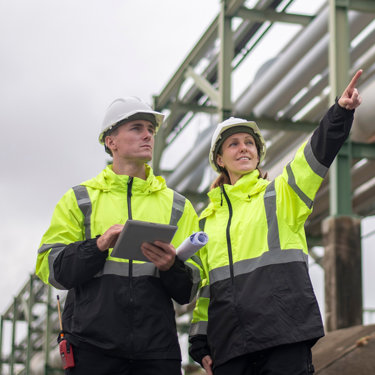Quick Guide: The Environmental Permitting Regulations 2016
Published: 29 March 2023 | Download Quick Guide
This Quick Guide looks at The Environmental Permitting Regulations 2016, the legal implications, why it's important to act, and what you should do to apply this legislation to your organisation.
Summary
The aim of The Environmental Permitting (England and Wales) Regulations 2016 is to streamline the legislative system for industrial and waste installations into a single permitting structure for those activities that have the potential to cause harm to human health or the environment.
Pollution (except for water discharge or groundwater activities) is defined as “any emission as a result of human activity which may:
- be harmful to human health or the quality of the environment,
- cause offence to a human sense,
- result in damage to material property, or
- impair or interfere with amenities and other legitimate uses of the environment.”
The permitting system will aim to protect the environment, encourage best practice in the operation of regulated facilities and minimise the regulatory administrative burden to operators.
Some activities could harm the environment or human health unless they are controlled, and the The Environmental Permitting (England and Wales) Regulations 2016 require operators to obtain an environmental permit in order to:
- Protect the environment and human health;
- Deliver permitting and compliance effectively and efficiently in a way that provides increased clarity and minimises the administrative burden on the regulator and operators of facilities; and
- Encourage regulators to promote best practice in the operation of regulated facilities.
A permit is a document issued by a ocal authority to an operator allowing them to operate the facility subject to conditions.
The operator must, after the grant of the permit, ensure that the facility is operated so as to comply with the conditions of the granted permit.
The legal perspective
The Environmental Permitting (England and Wales) Regulations 2016 state that: “It is an offence to cause or knowingly permit a water discharge activity or a groundwater activity without an environmental permit.”
The principal offences under The Environmental Permitting (England and Wales) Regulations 2016 are:
- Operating a regulated facility without a permit.
- Causing or knowingly permitting a water discharge activity or groundwater activity without a permit.
- Failing to comply with a permit condition, flood risk activity emergency works notice, flood risk remediation notice or an enforcement-related notice.
A pollution incident caused by poorly maintained or inadequate equipment is a strict liability offence and failure to adhere to current standards and good practice is a key aggravating factor when the regulators consider enforcement action.
Enforcement action from the regulators could be in the form of prohibition or improvement notices, which can lead to significant business disruption.
Why you must act
You should maintain all your critical assets, from fuel infrastructure to tanks, bunds, separators and drainage in accordance with the relevant standards to ensure you do not fall foul of The Environmental Permitting (England and Wales) Regulations 2016.
The costs of failing to do this are not just environmental, but legal, financial, and reputational.
Penalties and reputational issues
If you pollute, you could get an unlimited fine (of up to 100% of pre-tax profits), go to prison for up to 5 years, or both.
You may also have to pay for the whole cost of the clean-up.
There could be further costs, such as paying compensation to third parties, higher insurance premiums or loss of contracts.
A pollution event due to an wrongly specified or poorly maintained separator could invalidate a business’s insurance cover.
Practical application
Operators should ensure their equipment is fully compliant with The Control of Pollution (Oil Storage) (England) Regulations 2001 and The Water Resources (Control of Pollution) (Oil Storage) (Wales) Regulations 2016.
In addition, following the standards and good practice stipulated in BS EN 858-2:2003 and CIRIA C736 would be beneficial in maintaining assets.
We advise working with an environmental partner who can:
- Service and test your equipment according to their specific type and setting, using the latest technology and methodologies.
- Conduct a non-intrusive inspection to check levels and functionality of key components, and an integrity inspection to detect internal faults.
- Help you to keep full records of maintenance, servicing, inspection, and testing, demonstrating you have been proactive, should an incident occur.
What you should do
- Prevent and avoid any water discharge activity or groundwater activity.
- Implement an environmental management system appropriate for your activity.
- Ensure that all assets are maintained and inspected as required.
- Check that all inspection and maintenance records are kept safe and available to view by regulators.
You can find all our Quick Guide downloads here.
Environmental compliance today, creating a sustainable tomorrow
Helping you reduce risk to the environment and your operation by managing assets compliantly while achieving commercial, ESG, and net-zero goals.
Contact our experts
